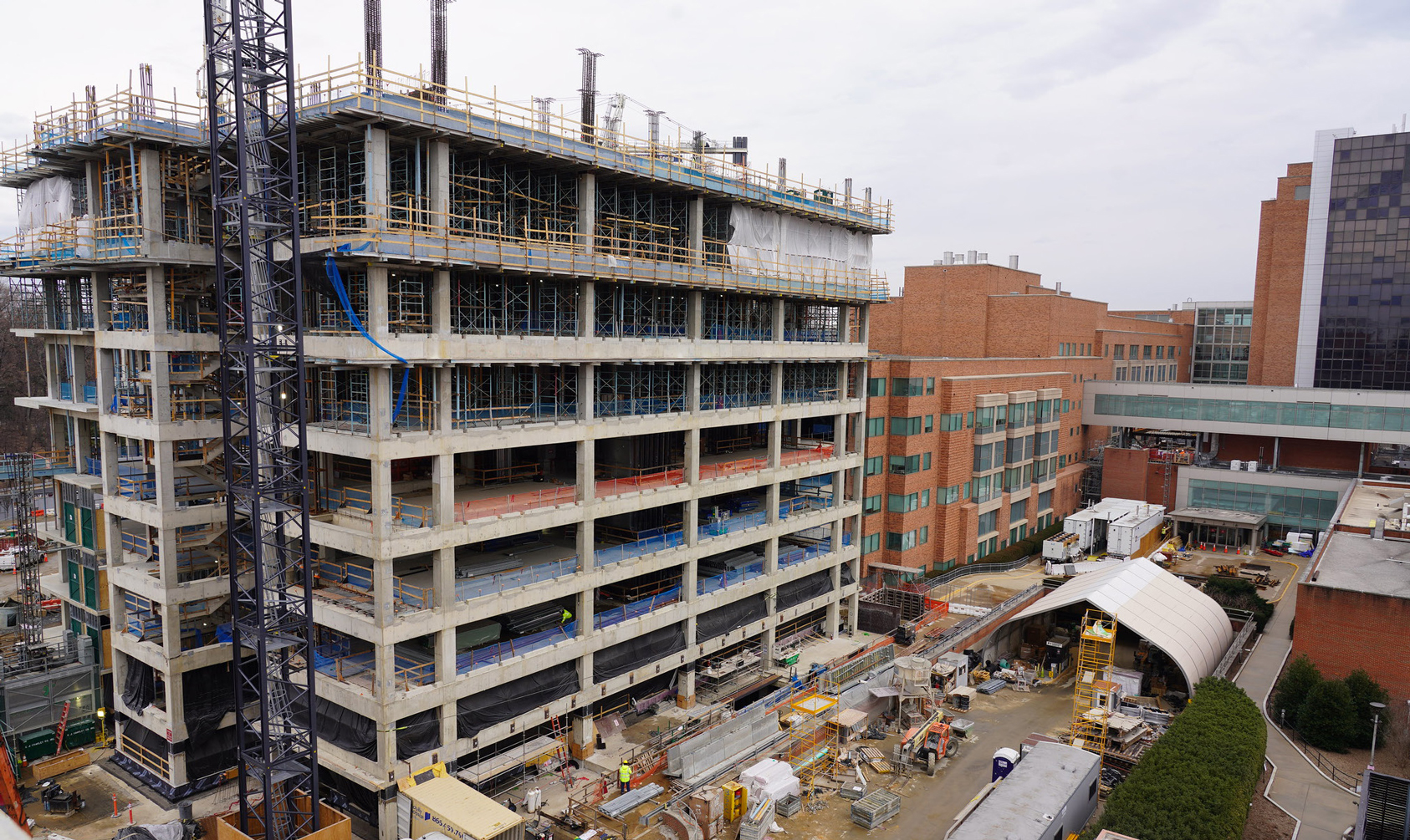Putting Patients First, the SRLM Will Advance the Future of Medicine

Since its 2023 groundbreaking, construction on the Clinical Center's new Surgery, Radiology and Laboratory Medicine (SRLM) wing is steadily advancing from an architectural concept into a physical reality. So why is the hospital expanding?
The short answer: to provide more space and reliable, efficient infrastructure to advance Clinical Center patient care and research deep into the future.
It's no coincidence that three departments heavily reliant on technology will move into the new wing: laboratory medicine, perioperative medicine, and radiology and imaging sciences. Slated for completion in 2028, the SRLM wing will also house clinical research arms of the National Cancer Institute and National Heart, Lung, and Blood Institute.
For the Department of Laboratory Medicine, the new facilities will offer greater, modernized laboratory space and equipment and a molecular research laboratory new to the department, helping it sustain over a million tests conducted each year in support of patient health and treatment. The department operates 24 hours a day, 365 days a year, employing 170 staff across six services: chemistry, hematology, immunology, microbiology, phlebotomy and sterility
"The new SRLM lab facility will be a center for ongoing research and the development of new diagnostic methods, contributing to the advancement of medical science and innovation, which in turn benefits both patients and staff," said Dr. Karen Frank, chief of the Clinical Center Department of Laboratory Medicine.
"This new state-of-the-art facility will enhance the NIH Clinical Center's reputation as a leader in laboratory medicine and attract more patients, specialists and research collaborations," she added.
The Radiology and Imaging Sciences Department, a key part of advanced diagnostics, provides imaging services for Clinical Center patients. The new wing will provide the department more dedicated and centralized space, enabling it to incorporate modernized magnetic resonance imaging (MRI) machines and four computed tomography (CT) scanners. The net result will enhance patient diagnostic capabilities and increase potential research studies of clinical imaging procedures and training in biomedical imaging research.
For the Department of Perioperative Medicine (DPM), the new wing will enable greater efficiency in the delivery of centralized patient care, said DPM Chief Dr. Andrew Mannes.
"Previously, perioperative or periprocedural care required redundant facilities, supplies and care teams. The new facility will enable these separate care teams to work together and share resources," he said.
Currently, the Clinical Center's DPM, which performs surgical procedures, and the Intensive Care Unit are on separate floors. The new wing will place the two directly opposite one another, facilitating patient transition between the two.
"Patients will benefit from the new facility, because the rooms will better serve our stakeholders," Mannes said. Dedicated procedure rooms, for example, will increase scheduling efficiency, increase case capacity, and potentially shorten scheduling times.
Likewise, an increase in the number and size of operating rooms will increase capability, increasing the opportunity for more groundbreaking procedures and discovery.
With new capacity, NIH clinicians will also be able to introduce emerging clinical diagnostic and treatment technologies to advance patient care and scientific discovery.
Planners say they adapted the project to incorporate lessons learned in patient care from the SARS-COVID-2 pandemic. The SRLM will be more capable of responding to future outbreaks and medical emergencies, thanks to innovations in infection control, communication and surveillance.
By design, the facility is tailored for a patient population that is often immunocompromised and being treated for rare or previously undiagnosed diseases.
It has also been designed for improved reliability with utility infrastructure and monitoring systems that can be maintained and repaired with minimal impact to patient care. Interstitial floors, for example, allow access to all utility systems without disturbing critical patient areas above and below.
These infrastructure upgrades extend to the entire hospital complex, most notably a new electrical system and modern power grid for the Clinical Center. Improved reliability and safety of the electrical and backup system will help ensure the hospital's continuous, safe operation.
The current phase of the project, the new construction on view today, is anticipated to be completed in late 2026, allowing NCI and NHLBI activities to relocate.
Renovation of existing internal spaces will then begin which, when complete, will allow all Clinical Center departments to begin occupying their new or renovated spaces in 2028.


